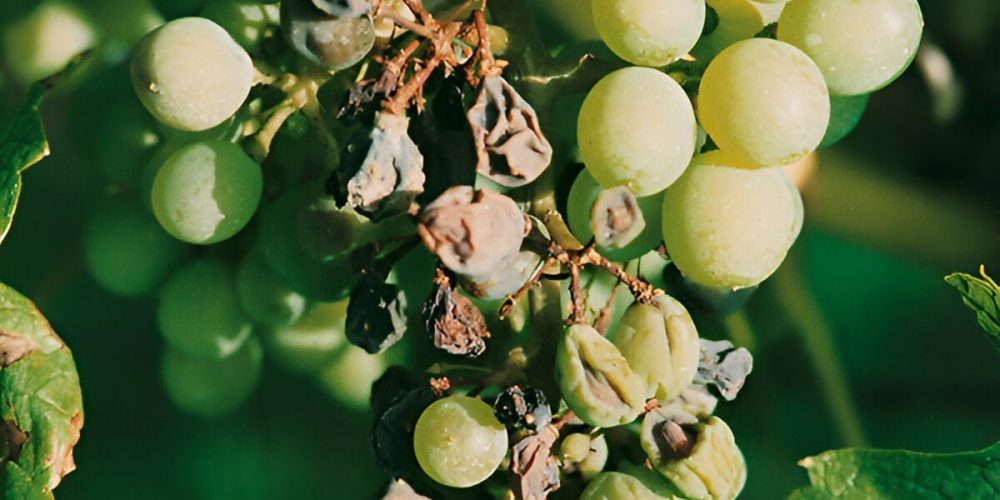Table of contents of the article
ToggleGrape downy mildew is a fungal disease that affects grapes, causing white spots on the leaves and affecting the quality of the fruit. In this article on your website, World of Plants, we will discuss methods of prevention and treatment.
Symptoms of downy mildew on grapes
- Scientific name : Downy mildew of grape
- The causative fungus : Plasmopara viticola Berl $ de Tora
- Type of disease : Innate
- Symptoms first appear on the upper surface of the leaves in the form of small, oily-looking spots, greenish-yellow and irregular in shape. In humid weather, white to gray fluffy growths appear on the edges of the spots on the lower surface of the leaves, which are the carriers of spore sacs.
- If the humidity is high (90-100%), growths cover the entire surface of the spots, causing them to dry out and gradually turn dark brown. The area of dead spots may expand significantly, leading to early leaf fall.
- These spots are usually noticed in late spring and early summer.
- When the infection occurs on older leaves at the end of summer and beginning of fall, symptoms can appear in the form of a mosaic on the upper surface of the leaves. Fluffy growths are less noticeable on the lower surface of the leaves.
- Downy growths can appear on young branches and parcels, but to a lesser extent than on leaves.
- The infection occurs on clusters during two periods of the growing season: the first, when the seeds are the size of peas, and then the young seeds become soft and turn light brown, and are covered with dense, fuzzy growths. Secondary: they do not become soft and are not covered with fuzzy growths, but rather turn green. Pale, then dark brown or violet-brown.
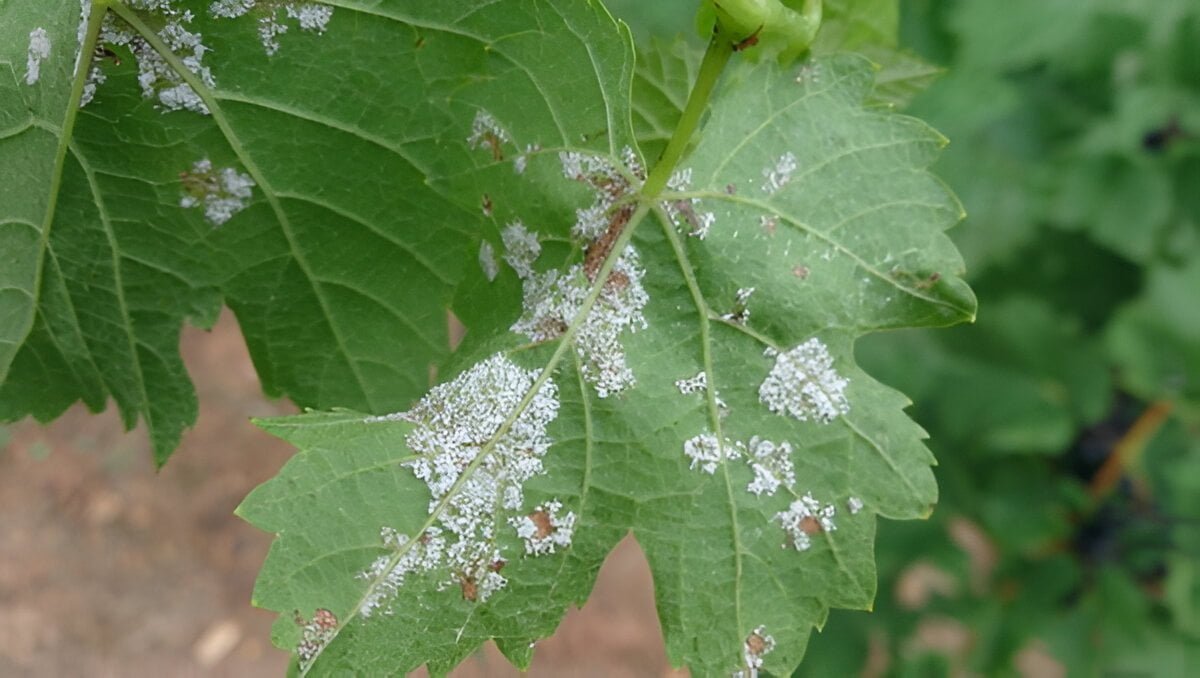
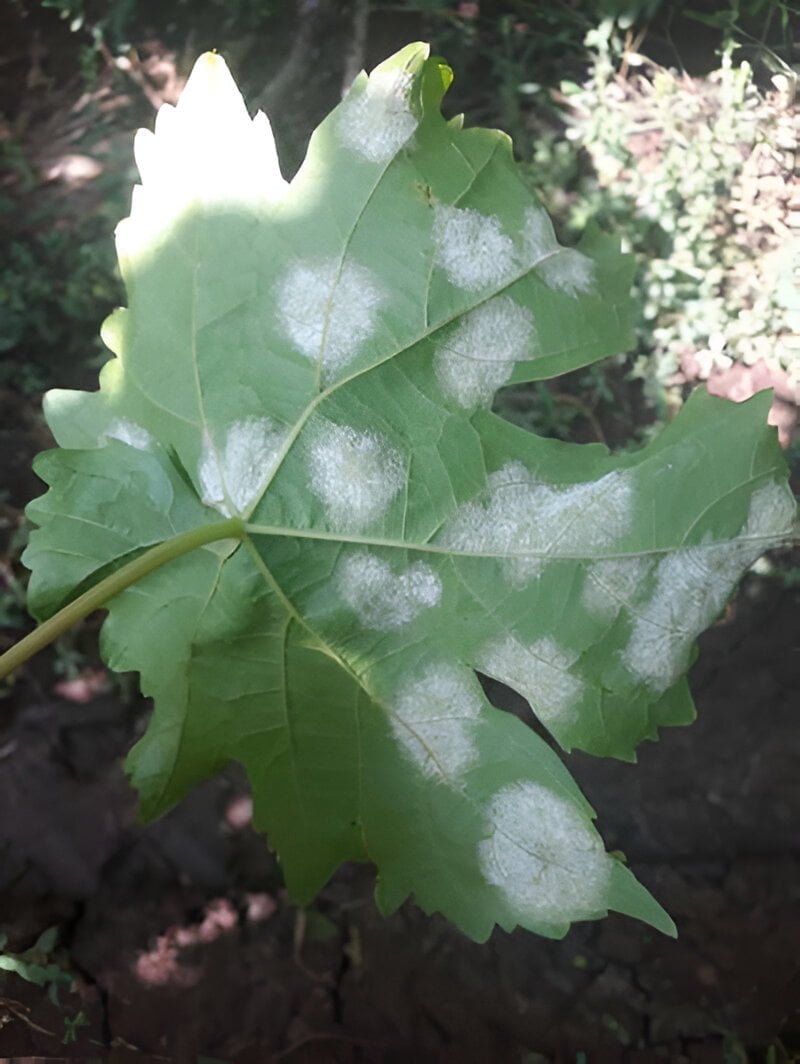
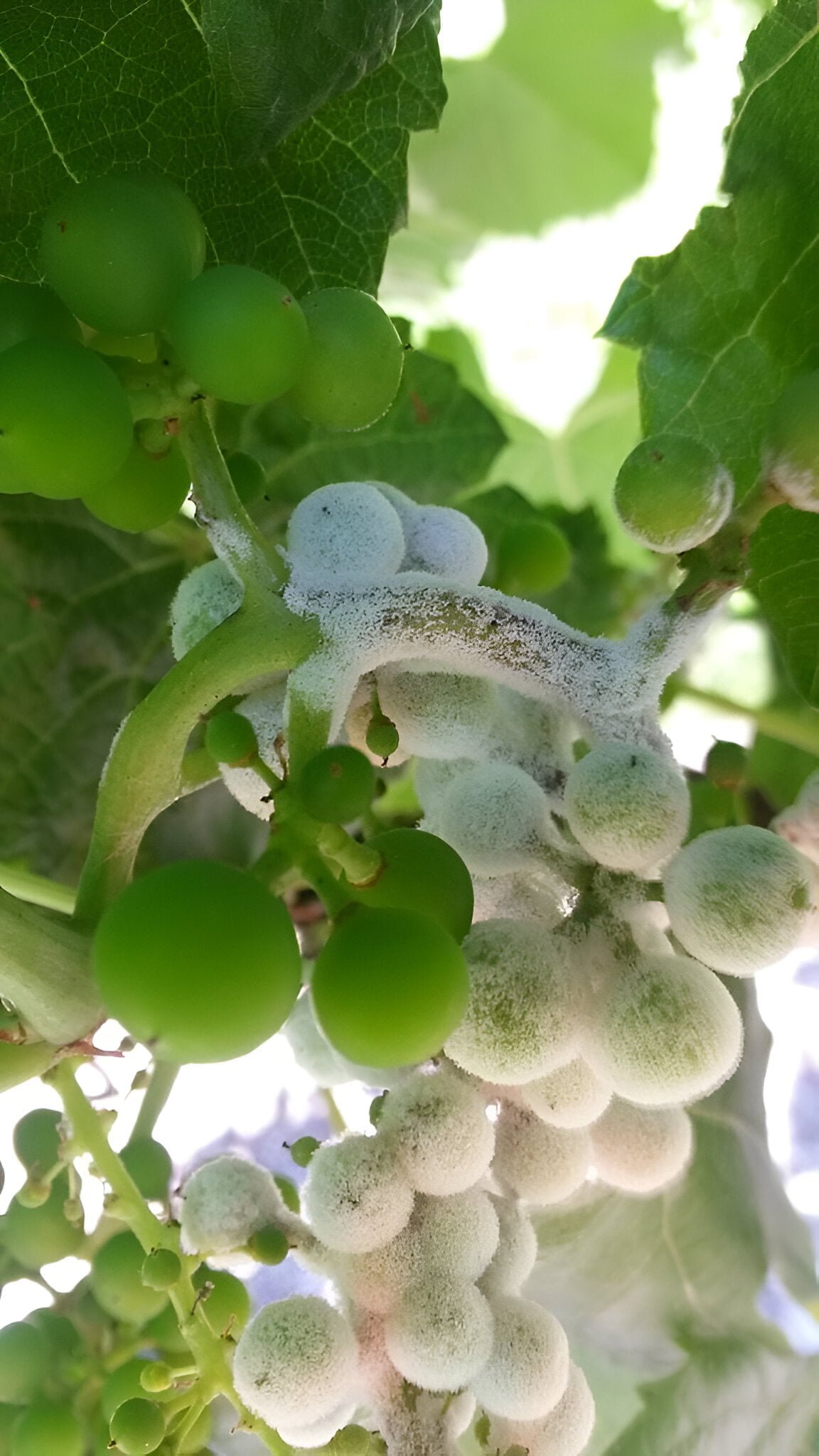
Causes of downy mildew on grapes
- In conditions of high humidity, the sporophores emerge outside through holes resulting from the injury itself, because the skin of the grapes does not contain stomata or pores.
- As the night temperature becomes cooler at the end of summer and beginning of fall, secondary infection of the berries can occur.
- Rainfall
- Water collects around trees
- Spores are transmitted by wind.
- Susceptible class
- Low temperature.
Suitable conditions for the spread of downy mildew on grapes
- Availability of high humidity.
- The temperature is between 11-30°C, with an ideal temperature of 20°C
- Downy mildew development cycle on grapes:
- The fungus spends the winter in the form of oocysts that form during the fall inside the tissues of infected leaves, and sometimes in infected parcels and fruits as well.
- The oocysts transmit the disease from one season to another as a result of their tolerance to unsuitable conditions of drought and heat. These spores can spend the winter in the tissues of old, infected leaves that fall on the soil and mix with it.
- When spring arrives, the oospores germinate, giving rise to a short sporangium, at the end of which the sporangium is carried, which releases the floating spores. This germination takes place when appropriate conditions are available.
- The swimming spores move to the surfaces of the leaves near the surface of the soil. They move, then become cysts and germinate, giving a germination tube. The initial infection occurs through stomata on the lower surface of the leaves. Then the fungal mycelium spreads in the interspaces and sends suckers into the cells to obtain their nutritional needs. Then the sporophores emerge after their formation. Through stomata, they carry the spore sacs to neighboring healthy plants to germinate quickly and release floating spores again.
Losses of downy mildew on grapes
- Death of young shoots and infected tendrils.
- The fruits wrinkle and the entire bunch rots.
- The plant is exposed to the risk of early frost because the presence of the fungus inside the plant tissue prevents the host from entering the dormant phase.
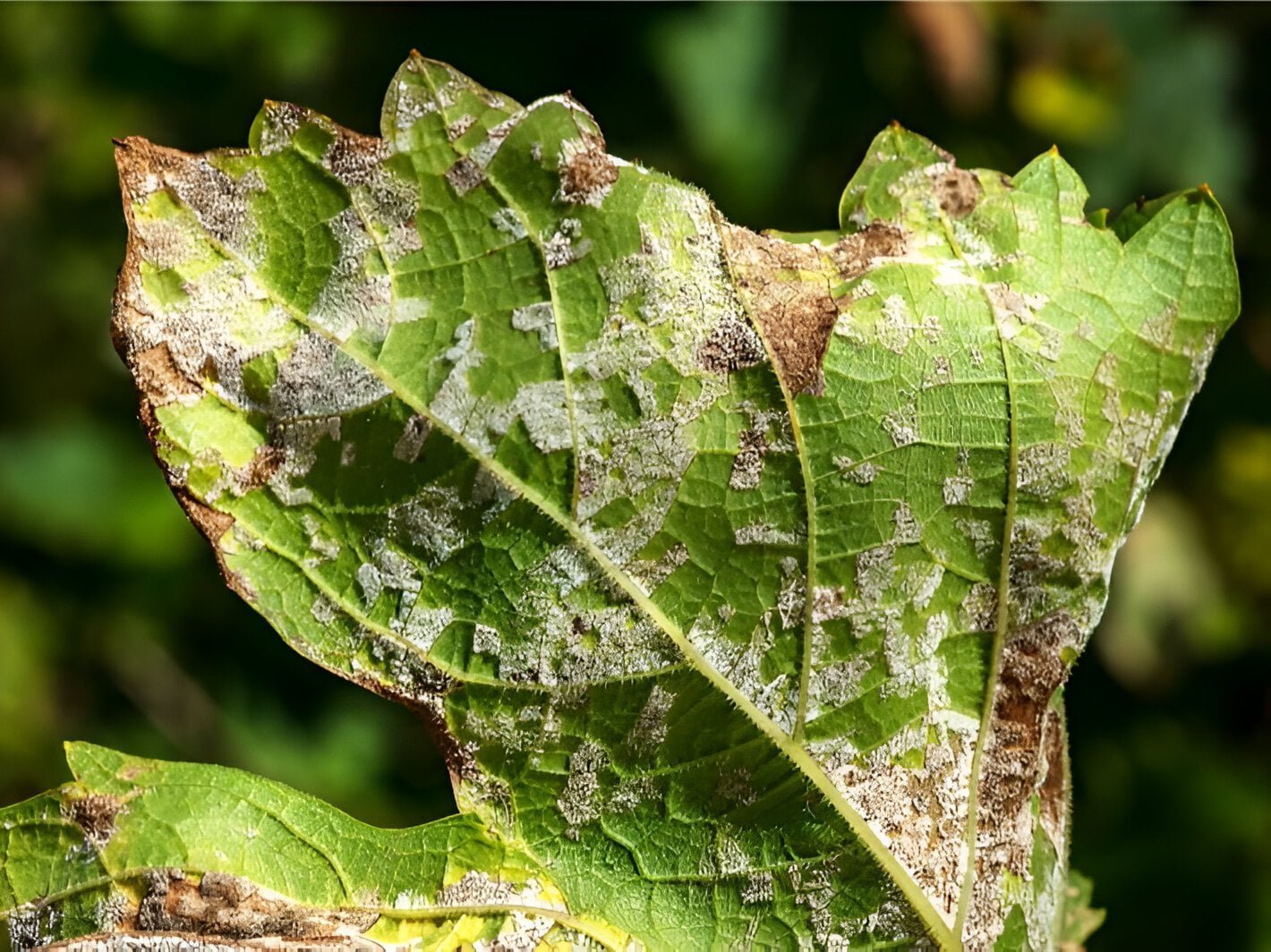
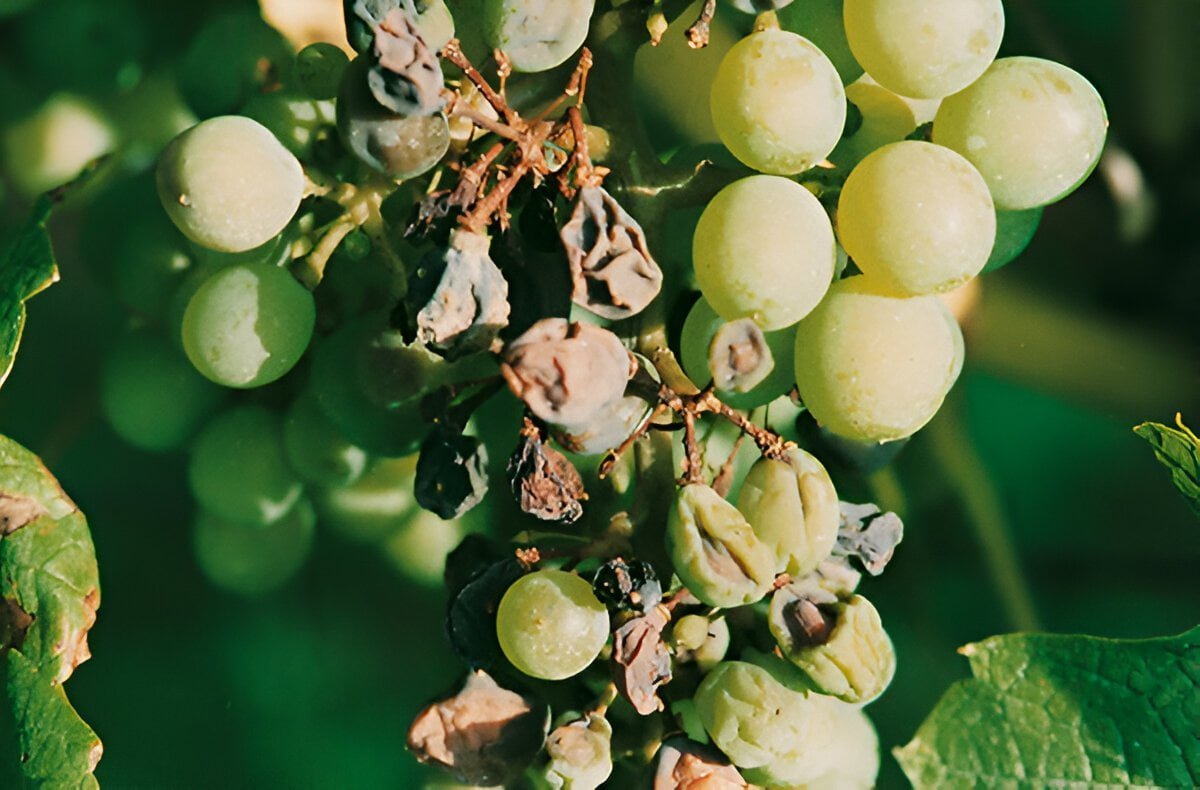
Control strategy against downy mildew on grapes
Preventive measures to prevent downy mildew on grapes
- Grape trees should be planted in a location where there is good ventilation, as air circulation reduces the humidity of the leaves.
- Plant grape trees in well-drained soil. It is also recommended to plant trees in rows.
- Avoid overhead irrigation of the tree, or use some methods that ensure the plant dries immediately after watering.
- Pruning the grapevine, and using a trellis to spread the leaves and dry them to reduce the chance of disease.
Chemical and organic control recommendations
- Organic control :
- Planting varieties resistant to downy mildew, such as (Sultana), (Chardonnay) and (Pinot Noir).
- Chemical control :
- It is recommended to use fungicides - when the tree is infected - that contain the following compounds:
- Phosphonates, such as; Aluminum fusetel.
- Phenylamides, such as; Melalaxyl.
- Carboxylic acid amides, such as; (Mandipropamid).
- Therapeutic strobilurin fungicides.
- Consecutive applications of phosphoric acid products to burn active mildew lesions and stop the spread of the disease.
- It is recommended to use fungicides - when the tree is infected - that contain the following compounds:
In conclusion, we would like to note that we, at the world of plants website, offer you all the necessary services in the world of plants, we provide all farmers and those interested in plants with three main services::-
- Artificial intelligence consulting service to help you identify diseases that affect plants and how to deal with them.
- Blog about plants, plant diseases and care of various crops ... You are currently browsing one of her articles right now.
- An application that provides agricultural consultations to clients, as well as a service for imaging diseases and knowing their treatment for free – Click to download the Android version from Google Play Store، Click to download the IOS version from the Apple App Store.
references:-
- Gessler, C., Pertot, I., & Perazzolli, M. (2011). Plasmopara viticola: a review of knowledge on downy mildew of grapevine and effective disease management. Phytopathologia Mediterranea, 50(1), 3-44
- Gindro, K., Alonso-Villaverde, V., Voinesco, F., Spring, J. L., Viret, O., & Dubuis, P. H. (2012). Susceptibility to downy mildew in grape clusters: new microscopical and biochemical insights. Plant Physiology and Biochemistry, 52, 140-146
- Madden, L. V., Hughes, G., & Ellis, M. A. (1995). Spatial heterogeneity of the incidence of grape downy mildew. Phytopathology, 85(3), 269-275
- Plasmopara viticola – jstor
- Susceptibility to downy mildew in grape clusters: New microscopical and biochemical insights – sciencedirect
- spatial heterogeneity of the incidence of grape downy mildew – pdf file




